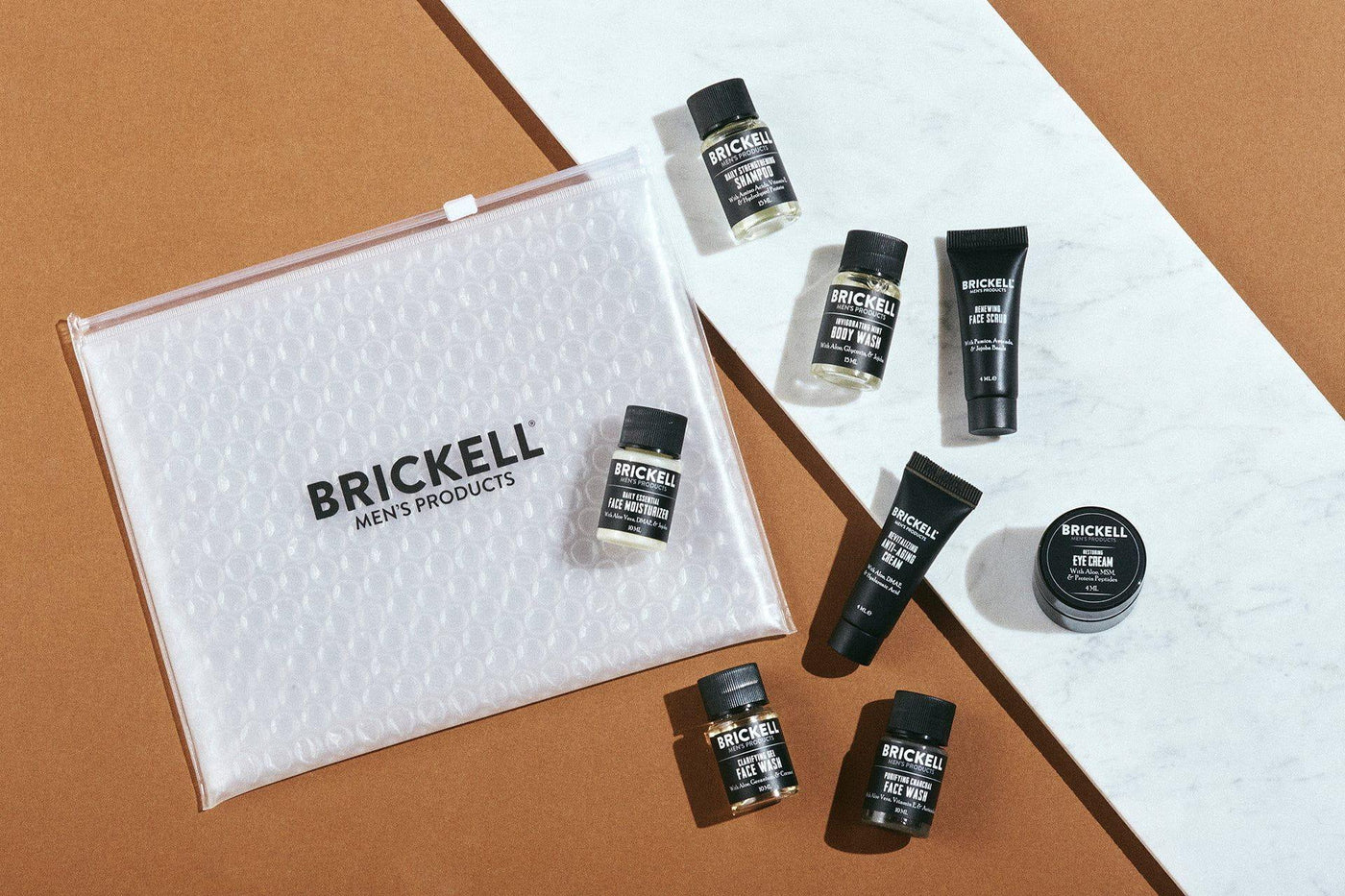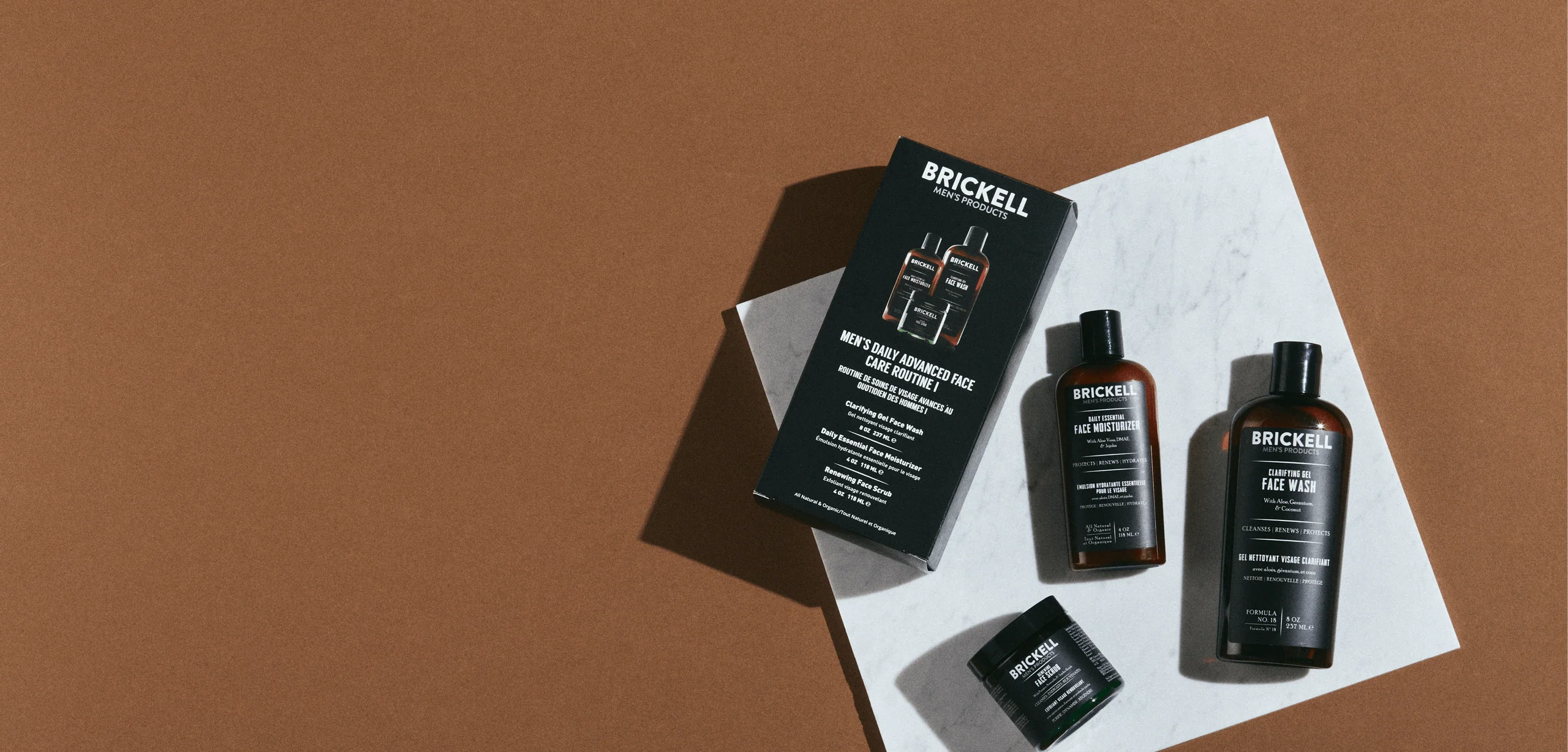The Grooming Manual
How to Get the Most Benefit from SPF Face Moisturizer for Men

If you care about your skin, you’ve got to protect it from the sun. Simple as that.
UV radiation causes skin cancer and speeds up the aging process. Non-melanoma skin cancer is the most common form of cancer - with more than 3 million new cases each year just in the US. You don’t have to have a genetic risk of cancer to be concerned. Chronic sun exposure dramatically increases the chance of developing skin cancer - for anyone.
What does it take to protect yourself? Regularly using an SPF product that keeps UV radiation from damaging your skin. It will significantly reduce the negative effects of sun exposure.
An SPF face moisturizer is (or should be) an essential part of any men’s skincare routine. But its benefits go beyond cancer prevention. UV rays also speed up the aging process, causing damage to skin cells that leads to wrinkles, age spots, and pigmentation issues. According to a study published in the Annals of Internal Medicine, you can slow the aging process by 24% just by using an SPF product daily.
More good news - it takes minimal effort to get significant results. The sooner you start using an SPF moisturizer, the better - here’s why, how to choose the best product for your skin, and how to get the most benefit from your moisturizer.
History of Sun Protection
Humans have been looking for ways to protect their skin from the sun since ancient times. It wasn’t until the early 20th century that a recognizable sunblock product was first developed. An early example was the "Glacier Cream” developed by Austrian scientist Franz Greiter. He made it right in his home kitchen - but it only had an SPF of 2.
Benjamin Green, who would later go on to found Coppertone, developed an effective sunscreen that was originally used for soldiers in the South Pacific during World War II.
Since then, sunscreens have been updated and improved. But the general idea remains - it’s designed to prevent sun damage and sunburn.
What Is SPF?
SPF - or Sun Protection Factor - is a rating system for sun protection products. Specifically, it measures how well a product blocks UVB radiation. There are two easy ways to understand SPF:
1 - How long it takes to burn. SPF ratings tell you how much longer it will take your skin to burn compared to being directly exposed to sunlight. For example, a product with a rating of SPF 15 will keep your skin from burning 15 times longer than exposed skin would on its own.
2 - Percentage of harmful UV radiation. No product can block out 100% of the sun’s radiation. SPF 15 filters about 93% of UVB rays. SPF 30 gets that up to 97%. SPF 50 maxes out at 98%. While some products are rated SPF100+, they only offer marginal protection beyond SPF 50.
Of course, there are some caveats to this. If you didn’t apply enough sunscreen or missed parts of your skin, it’s no good. Also, no sunscreen maintains its original level of SPF after two hours. If you’re going to be constantly exposed to the sun for over two hours, you need to reapply. If you get wet or sweaty, reapply sooner - even water resistant and sweat resistant products need to be reapplied after you get wet and dry off.
You may have noticed that SPF focuses on the effect of UVB rays - those are the ones that cause sunburn and can lead to cancer. UVA rays are also a major concern - they’re what speeds up the aging process. According to the Skin Cancer Foundation, this includes all kinds of photo aging; leathering, wrinkling, sagging, etc. So make sure you’ve chosen a product that protects your skin from both UVA and UVB radiation. These are labeled as “broad spectrum” protection.
How Much SPF Is Enough?
For most guys who want to protect their face from sun damage, SPF 20 is the best choice for everyday use. It filters out over 93% of UVB rays. It also tends to be lighter and easier to apply than higher SPF products. That’s a big advantage since you’re more likely to make it a daily habit when the product is easy to apply. If you’re going to be at the beach all day without a shirt on, a higher SPF is better.
For those long days in the sun, remember that reapplying is critical. Don’t be lazy - slather on the sunscreen every time you come in from the water or get sweaty.
Should I Use Chemical or Physical Sunscreen?
Chemical sunscreens absorb the sun’s rays - think of them as a sponge. Their active ingredients vary from brand to brand, but tend to include avobenzone, oxybenzone, octinoxate, and others. They rub into the skin easily without leaving behind any kind of residue or stain.
These products can cause skin irritation, especially in guys with sensitive skin. And their ingredients have been called into question by many experts. Some chemical sunscreens have been linked to hormone disruption, cell damage, and coral reef damage.
Physical sunscreens block radiation - think of them as a shield. They use zinc oxide and titanium dioxide to stop UV rays from damaging your skin. These are better for men with sensitive skin. If you’re concerned about the possible harmful effects of chemical sunscreens - especially those made with oxybenzone, switch to a physical, mineral-based sunscreen.
Face Moisturizer with SPF vs. Using Two Separate Products
Should you use a face moisturizer for men with SPF? Or would it be better to apply a men’s face moisturizer, let it absorb, and then apply an SPF product over that?
Ultimately, it comes down to your preferences and your needs. If you will be spending the entire day indoors and will have minimal sun exposure, using a face moisturizer without SPF is fine. You don’t need SPF if you won’t be in the sun.
However, most guys will have at least some daily sun exposure. That’s what makes our Daily Defense Face Moisturizer with SPF 20 so convenient. You can save time - and ensure you actually apply sunscreen - by using a 2-in-1 product.
Plus, you can trust its natural, hydrating ingredients. With mineral based SPF 20, you’ll benefit from the product’s moisturizing and sun-blocking properties equally.
Thinking about switching off your SPF moisturizer for the fall and winter? Remember, sun damage happens all year long. Just because the hot summer is gone doesn’t mean the sun isn’t aging your skin and putting you at risk for skin cancer. Don’t let the cool, cloudy weather fool you - SPF is still vital.
How to Apply Face Moisturizer with SPF
Seems simple - just rub it on and your done. Right?
Not quite. There are a few factors you want to keep in mind to get the most benefit from your SPF moisturizer.
Wash First - Whenever you’re using face moisturizer, wash your face before you apply it. You want the ingredient to penetrate your skin properly. For that to happen, you need to get rid of any dirt, oil, and debris that may be resting on the surface with face wash.
Use Other Products Next - If you’re using any other skincare products - like a daytime serum or exfoliating scrub - apply those first. Face moisturizer should be the last step in your morning skincare routine.
Easy Does It - Don’t overdo it. Physical sunscreens - such as our Daily Defense Face Moisturizer with SPF 20 - shouldn’t be slathered on en masse. Use too much and you could be left with some white marks on your skin. Apply as little as possible while still covering your entire face for the best results.
Apply Early - For the most benefit, you need to apply your sunscreen at least 15 minutes before you actually head out into the sun. That gives it time to properly absorb and take effect. A little patience goes a long way.
Sun Protection Beyond SPF - There are other smart ways to protect your skin from sun damage. Wear a hat with a wide, ample brim. Use UV blocking sunglasses. Wear lightweight long sleeves if you’ll be working in the direct sunlight - especially at midday when the sun’s rays are most intense. And whenever possible, stay in the shade.
Your Lips Can Burn Too - The sensitive skin on your lips is especially susceptible to sun damage. Your hat can help - but an SPF lip balm is even better.


